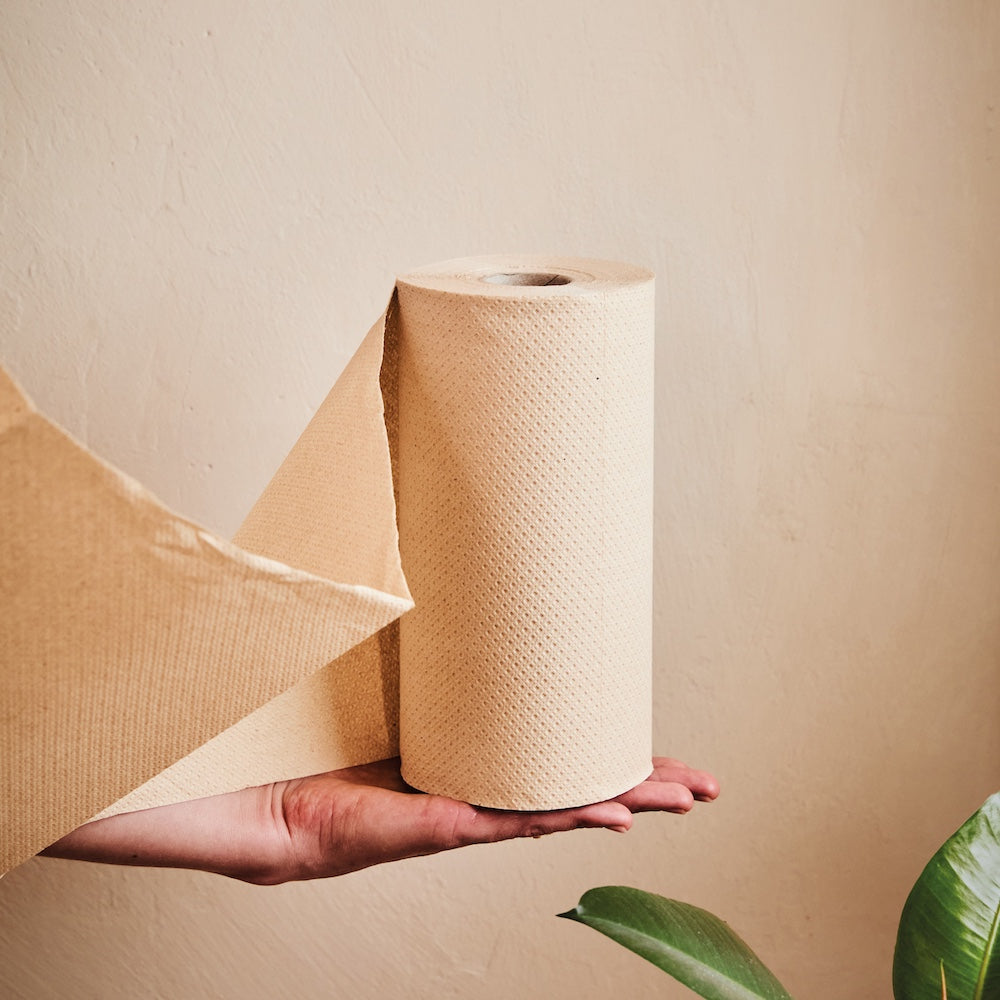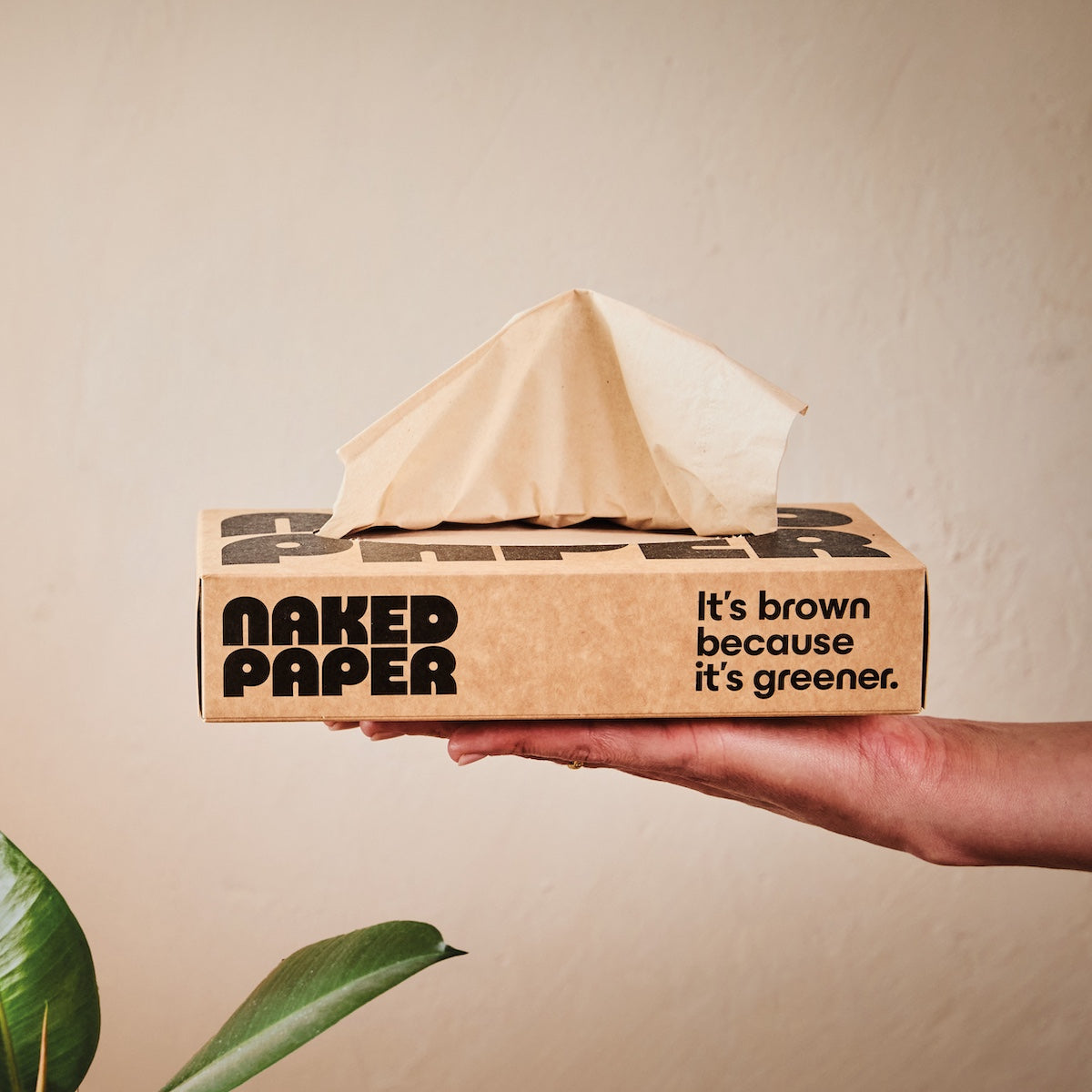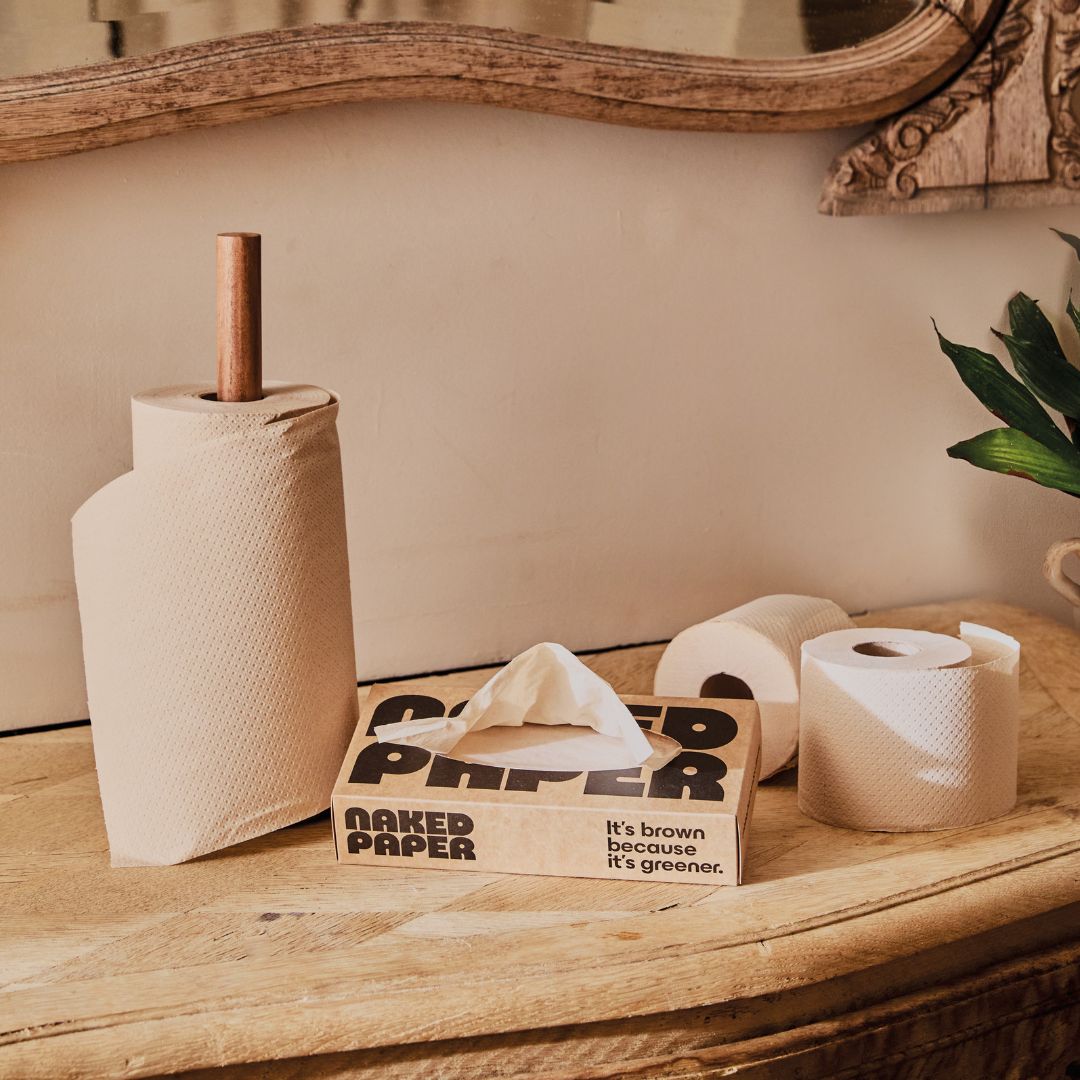Should you cover toilet seats with toilet paper?
 People come to us with all sorts of toilet paper questions. Some are practical, some are personal, and many come straight from internet searches.
People come to us with all sorts of toilet paper questions. Some are practical, some are personal, and many come straight from internet searches.
At Naked Paper, we like to take the time to give honest, helpful answers – whether it's something fairly common, like which toilet paper is best for septic systems, or something a bit more obscure, like how did the Romans wipe their bottoms?
Today’s topic is for those times when you’re out and about. If you’re using a public toilet, should you cover the seat with tissue first?
Some people will have no idea what we’re talking about. But if you’ve ever found yourself carefully layering toilet paper over the seat before sitting down, this one’s for you.

What are toilet seat covers?
Pre-made toilet seat covers are thin, disposable sheets of tissue designed to be placed on the toilet seat before you use it. They're shaped to fit standard seat sizes and can be flushed away after use.
You won’t find them often in the UK, but they’re common in other parts of the world – particularly in public toilets in the US. When they’re available, they’re usually stored in a slim dispenser attached to the wall of the cubicle, near the toilet paper.
They’re made to offer a physical barrier between your skin and the seat. But the real question is: do they work?

What is the point of a toilet seat cover?
The idea behind toilet seat covers is that it’s more hygienic than direct contact between your skin and the seat of the loo.
There’s a common concern that public toilet seats could be contaminated with bacteria or viruses left behind by previous users. For people who are particularly cautious about cleanliness, a disposable tissue barrier provides reassurance that even if the seat hasn’t been cleaned recently, the cover will reduce direct contact.
In places like the UK, where tissue toilet seat covers aren’t readily available in public loos, people who are wary of direct contact with the seat often come up with their own solutions.
One common method is hovering – not sitting at all, but holding yourself above the seat. It’s a free core workout but it comes with a couple of drawbacks. Firstly, it’s been shown that women who frequently hover over toilets are more likely to experience incomplete bladder emptying, which can contribute to health issues like incontinence and urinary tract infections. It also increases the chances of splashing or mess, making the toilet less hygienic for the next person.
Another approach is the homemade seat cover; placing extra toilet paper in a layer covering the seat, before sitting down. Most people will develop their own technique for this, but using two long strips to go down each side of the seat seams to be the preferred method.
Between pre-made covers, hovering, and hand-crafted alternatives people are getting creative in public loos all over the world.
But all of this problem-solving assumes that there’s a problem in the first place, so we should probably get to the crux of the matter; are there actually any health or hygiene reasons why skin contact with toilet seats is a bad idea?
The answer is no. In fact, if you’re worried about hygiene, a tissue cover is going to do more harm than good.

Why you don’t need toilet seat covers
Toilet paper is porous. This is what allows it to absorb moisture and dissolve easily after the flush. But it also means it’s not an effective barrier against bacteria. A layer of toilet paper between you and the seat won’t prevent germs from passing through.
Your skin, on the other hand, is a barrier. It’s your body’s natural line of defence against infection. Unless you have an open wound, there is no way to pick up harmful bacteria from simply sitting on a toilet seat.
In fact, research has shown that public toilet seats carry far fewer germs than objects we touch all the time, such as door handles, keyboards, or, the big one, mobile phones. On average, your phone carries about ten times more bacteria than the typical toilet seat.
And while it might feel cleaner to cover the seat with tissue, doing so can create its own problems. Toilet seats are generally made from hard plastic that’s easy to clean and keep hygienic. Covering them with tissue simply increases the chance that you’ll touch the seat or surrounding surfaces while laying the paper down, meaning more contact between your hands and the toilet.

How to avoid germs in public toilets
If your goal is to stay clean and minimise exposure to germs in public toilets, the most effective steps are also the simplest:
1. Don’t have your phone out in the cubicle
Phones aren’t cleaned often, and they pick up germs easily. Bringing a phone in with you – and using it while on the toilet – can transfer bacteria from the environment onto something you carry around and touch all day.
2. Wash your hands thoroughly
This is the single most important hygiene habit. Using warm water and soap, scrub for at least 20 seconds, and make sure you clean under your nails and between your fingers. Most of us probably remember the guides to handwashing that did the rounds in 2020, but here’s a refresher if you’ve blocked that out!
3. Be aware when you flush
Flushing a toilet can release tiny droplets from the bowl into the air – a phenomenon known as “toilet plume.” At home, closing the lid before you flush reduces toilet plume significantly. If you’re in a public toilet with no lid (or you’d rather not touch the lid) just flush and leave promptly.

Conclusion: save the toilet paper for what it’s made for
Hopefully that’s reassuring!
We make soft, sustainable toilet paper that’s gentle on your skin and kind to the environment; free from PFAS, BPA, and harsh chemicals. There are 320 sheets of bleach-free paper in a Naked Paper roll, and there’s no need to waste any of them on toilet seat upholstery.
If you’re in a public toilet, and the seat looks clean, it’s safe to sit down. The biggest risks come from your hands and your phone. Keep the phone in your bag and make sure to give your hands a good wash afterwards and you’ll be fine.
Want to try toilet paper that’s too good to waste?
Recent blog posts
-

Our footprint stage one: raw materials
People are often interested to learn more about how we make Naked Paper, and the CO2e emissions* involved at every stage. So we're breaking it all down, from root to roll, starting with our raw materials and how they get...
-

Can you recycle kitchen roll?
It’s a common scene; You’re standing in your kitchen, holding an empty jar or box or bottle, or (if you’re one of our lovely customers), a sheet of bleach-free kitchen roll. You’re hovering over the recycling bin, and you’re wondering: can...
-

What is PFAS-free toilet paper?
It’s hard to imagine a more everyday product than toilet paper – tissue sheets wrapped around a cardboard core. It’s a simple daily convenience and most of us don’t think much about it. But in 2023 scientists discovered an alarming fact about...








